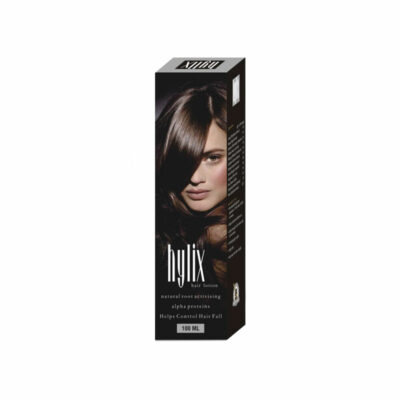Henna Hair Dye to Color Hair

What is Henna?
Henna or Mehndi leaves have been used since ages for dying hairs, skin and nails. It provides red-orange shade and is permanent in nature when used on hairs. The plant of henna grows in hot weather conditions and is popularly used in the Indian subcontinent and Middle-east countries as a natural hair color.
Since Mehndi leaves are obtained from plants and no additives are required to impart color to hairs and skin it is completely safe and suitable for regular use.
One can easily make a henna hair dye at home and cover-up white or greying hairs with attractive red-orange shade. One can also shade his or her hair in black or brown by making a little variation to the recipe.
Henna is preferred over other commercial creams and products because it does not lighten the shade of healthy hair. The risk of black hair becoming white or grey is associated with commercially made hair dyes.
Commercial dyes contain chemicals and acids which provide long-lasting color and are convenient and less time consuming but at the cost of lightening shade of healthy hairs.
These chemicals on regular use also affect the health of the scalp and cause dryness which can reduce hair growth and form bald spots.
On the other hand, henna leaves have shown heartening signs in improving softness, thickness, and density of hairs.
The paste of mehndi leaves also helps in loosening curls of hairs to a large extent and keeps hair smooth and easy to manage. The color of henna is long-lasting if not outgrown.
Another plant Indigo is generally called black henna or Kali Mehndi. This is from the same family and is used in various hair dyes to impart black and brown shade to tresses.
In today’s high pollution environment using Mehndi to color hair is a far better choice than chemical-laden dyes and hair colors.
For more on hair care, check out:
Henna Paste for Grey Hair
Home Remedies for White Hair
How to Make Henna Hair Dye?
There is a traditional way how to make the henna hair dye which gives hair long-lasting attractive red-orange shade and many other benefits.
- Mehndi Powder
- Lemon juice
- Clove powder
Choose the best quality mehndi first. For long-lasting color Body Art Quality henna is considered the best. Always remember that only natural mehndi is the one which gives a red color.
Anything which gives any other shade is not purely natural mehndi powder. The BAQ henna powder is expensive than other forms but it provides better shade and is easy to rinse off which makes it a better choice for making hair dye.
Before using Mehndi to color hair it is better to test for any sort of allergic reaction or quality of shade. Henna is purely natural and chances of any allergies are negligible, but in some cases, strands do not absorb the color properly and the desired shade is not achieved.
People who are using commercial hair colors may need to wait for a month after the last application before they can get used mehndi and get proper color.
The commercially designed creams, gels and hair colors coat tresses and prevent the absorption of henna color.
Apply mehndi powder after mixing it with water over a bunch of hairs and wash off after an hour, check for the shade of color before you decide to make henna hair dye at home.
After choosing the best quality mehndi and through with the testing process, you are ready for a step by step process on how to make the henna hair dye.
Take a sufficient quantity of mehndi powder in a bowl as per your hair length. Normally about 100 grams of powder is sufficient for short strands shoulder long.
Traditionally an iron bowl is used to make henna hair dye at home in iron utensil the dye molecules get released within the plant cells very well. So if you have any bowl made up of iron use it to prepare a paste of mehndi to color hair.
Making mild acid to henna powder is the first step of how to make the henna hair dye. Lemon is commonly used for mild acidic effects.
If lemon is too sour add lemon juice and water in equal parts to dilute it. You can also use orange juice to make the paste. Add lemon juice or orange juice slowly to mehndi powder and keep stirring it to make a thick paste and avoid the formation of lumps.
You can also use acidic teas for desired effects in place of lemon or orange. Using teas is also one of the popular ways how to make the henna hair dye.
Use tea when it has cooled down completely. Refrain from using the tea when it is hot or warm. You can add some water to get the desired consistency.
Add one teaspoon of clove powder. This is also part of the traditional method of how to make the henna hair dye.
Clove powder may cause a bit of irritation in the case of some men and women so do the test first before adding it to the paste.
Stir the mixture to mix clove powder evenly. Keep the bowl in a safe place and let it sit overnight. You can keep it at a warmer place for the fast release of dye molecules. In the morning the paste is ready to be used.
Above mentioned steps describe the process of how to make the henna hair dye. After making the paste all you need to do is apply and wash it off the head.
Use your fingers after wearing gloves or you can use a fluffy brush to apply the paste over strands. Cover the entire length of strands from root to tip and also apply over the scalp in the form of a thick layer.
It is better to use a comb to pick strands in small bunches for applying dye thoroughly. Once you have covered all the tresses and entire scalp tie hairs and wear a shower cap.
Henna paste can be messy. It is thick but it takes time to dry off before the upper crust of layer dries off it can slide and fall over shoulders and back.
Stay in a position so that it does not fall off and once it begins to dry wear a cap or wrap it with a towel. Protect clothes from it as it can cause stains.
Let the paste sit for an hour. Do not apply henna over dirty or oily hairs. Dirt and oil can reduce the quality of color and may not bring the desired shade. It is better to wash hair with shampoo first and dry them completely.
If you keep head covered after applying henna paste it traps the moisture inside. Though this may cause a delay in drying but it improves the quality of color and give sufficient time for the dye to get absorbed in the shaft of hairs.
Once the henna paste has dried, you can wash it off with plain water. Ensure that you have a decent supply of water because it needs thorough rinsing to get off completely.
Wipe your hair with a soft towel and let them dry off completely. Clear all the paste which has fallen over skin or face. Do not judge the results immediately after washing. Mehndi hair dye will take another 2-3 day to reach its full potential.
There are little variations that can be included in this method. Adding some Indigo powder to henna powder is also a way how to make the henna hair dye.
Indigo powder will provide dark red shade and if you add these two in equal parts you will get brown or black shade. You should not add indigo powder in the dry state to henna powder.
First, make a henna paste as stated in the process and prepare a paste of Indigo powder with water in a separate bowl. Add these two pastes before applying.
Precautions While Using Mehndi Paste
If you have dry hair or scalp, use teas in place of lemon or orange juice. Make sure that the quality of the tea you are using is good.
People even use coffee to prepare henna hair dye caffeinated products are not good for the quality of dye and shall be avoided. You can use some sugar to make the paste smoother and easier to apply.
If your hairs are too dry you can try applying the paste over damp hairs or pre-oil before applying, do wash off oil before application though. The best oils to use along with henna are olive and coconut.
Benefits of Mehndi
There are many benefits of using Mehndi to color hairs than commercial creams and gels. It is purely natural hence no fear of any side effect or damage to tresses and scalp.
People with any skin type can use this for attractive red-orange shade or black and brown shade. It is a natural moisturizer.
The properties of mehndi leave improve hydration of scalp and softness of hairs. People can use it to loosen curls of hair and prevent them from locking and tangling due to dryness.
The use of henna for hair color improves the health of strands and darkens the shade of healthy hairs. Commercially designed creams and colors lighten colours of healthy hairs by reducing the level of melanin.
These also cause dry and hairs with split ends and affect their growth and natural shine negatively.
On the contrary, henna improves shine and softness and arrests the greying of healthy hair. It improves scalp health and promotes the growth of healthy strands at a faster pace.
People suffering from chronic dandruff also get immense relief by using mehndi to color hairs. The use of this natural dye improves the health of the scalp and reduces the intensity of the problem.
It clears existing dandruff and provides a clean and clear scalp. It is also very effective against ringworm and lice infestation.
In old times mehndi was not used just for hair coloring. It was used as a natural agent for keeping hair healthy and shiny. The benefits of henna protect strands from ill-effects of stressors that work incessantly and reduce density of hairs.
For more on hair care, check out:
Home Remedies for Shiny Hair
Home Remedies for Black Hair Care
You May Like…
